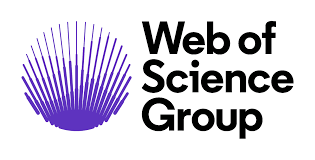Royal jelly as a novel bio-stimulant for asymbiotic seed germination andprotocorm development in Phalaenopsis
DOI:
https://doi.org/10.24154/jhs.v20i1.4938Keywords:
bio-stimulant, micropropagation, organic, Phalaenopsis, protocorm development, royal jelly, seed germinationAbstract
Orchid micropropagation is often limited by slow seed germination and early seedling development. This study evaluated the potential of royal jelly (RJ), a nutrient-rich organic substance, as a growth-promoting additive in the asymbiotic culture of five Phalaenopsis varieties viz., Nottingham, Dubrovnik, Andorra, Memphis, and Bucharest. A factorial experiment was conducted using two peptone concentrations (1/ gL{ 1 and 2/ gL{ 1) combined with four RJ levels (0, 150, 300, and 450/ ppm) in half-strength Murashige and Skoog (MS) medium. Results demonstrated that RJ significantly enhanced germination and seedling development in a concentration- dependent manner. The variety Nottingham cultured in 2/ gL{ 1 peptone medium supplemented with 300/ ppm RJ achieved the highest germination rate of 96.33%, reduced the time to protocorm formation by 2–3/ days, and increased leaf and root primordia numbers by 15–20% compared with the control. Higher RJ concentrations (450/ ppm) occasionally reduced germination and delayed early growth, indicating an optimal range for supplementation. These findings suggest that RJ can serve as an effective organic bio-stimulant for Phalaenopsis micropropagation, offering a sustainable alternative to conventional synthetic growth regulators. Future studies should isolate active compounds in RJ and assess its scalability across different orchid species.
Downloads
References
Altun, S. K., & Aydemir, M. E. (2022). Determination of antioxidant capacities with the phenolic flavonoid contents of royal jelly mixtures. Bee Studies, 14(1), 9–15. https://doi.org/10.51458/BSTD.2022.22 DOI: https://doi.org/10.51458/BSTD.2022.22
Bidarnamani, F., Mohkami, Z., & Karimian, Z. (2023). Cluster analysis helps to select appropriate pollination states by crossing of Phalaenopsis varieties. Agroteqnique in Industrial Crops, 3(4), 223–229. https://doi.org/10.22126/atic.2023.9725.1117
Bidarnamani, F., Mohkami, Z., & Karimian, Z. (2024). Pollination phenotypes in Phalaenopsis crosses: Guiding selection for optimal breeding. Journal of Horticulture Science, 19(2). https://doi.org/10.24154/jhs.v19i2.340 DOI: https://doi.org/10.24154/jhs.v19i2.3401
Boukraâ, L., Niar, A., Benbarek, H., & Benhanifia, M. (2008). Additive action of royal jelly and honey against Staphylococcus aureus. Journal of Medicinal Food, 11(1), 190–192. https://doi.org/10.1089/jmf.2007.567 DOI: https://doi.org/10.1089/jmf.2007.567
Chew, Y.-C., Halim, M. H. A., Abdullah, W. M. A. N. W., Abdullah, J. O., & Lai, K.-S. (2018). Highly efficient proliferation and regeneration of protocorm-like bodies (PLBs) of the threatened orchid, Phalaenopsis bellina. Sains Malaysiana, 47, 1093–1099. https://doi.org/10.17576/jsm-2018-4706-03 DOI: https://doi.org/10.17576/jsm-2018-4706-03
Fujiwara, S., Imai, J., Fujiwara, M., Yaeshima, T., Kawashima, T., & Kobayashi, K. (1990). A potent antibacterial protein in royal jelly: Purification and determination of the primary structure of royalisin. Journal of Biological Chemistry, 265(19), 11333–11337. https://doi.org/10.1016/S0021-9258(19)38596-5 DOI: https://doi.org/10.1016/S0021-9258(19)38596-5
Gnasekaran, P., Rathinam, X., Sinniah, U. R., & Subramaniam, S. (2010). A study on the use of organic additives on the protocorm-like bodies (PLBs) growth of Phalaenopsis violacea Orchid. Journal of Phytology, 2, 29–33.
Heriansyah, P., & Indrawanis, E. (2020). Uji tingkat kontaminasi eksplan anggrek Bromheadia. Jurnal Agroqua, 18(2), 223–232. https://doi.org/10.32663/ja.v18i2.1502 DOI: https://doi.org/10.32663/ja.v18i2.1502
Isda, M. N., Amin, N. A., & Fatonah, S. (2019). Effect of 6-benzylaminopurine and honey for in vitro shoot initiation of mangosteen seed explant from Riau, Indonesia. Journal of Physics. https://doi.org/10.1088/1742-6596/1351/1/012029 DOI: https://doi.org/10.1088/1742-6596/1351/1/012029
Islam, M. O., Rahman, A. R. M., Matsui, S. H., & Prodhan, A. D. (2003). Effect of complex organic extracts on callus growth and PLB regeneration through embryogenesis in the Doritaenopsis orchid. Japan Agricultural Research Quarterly, 37(4), 229–235. https://doi.org/10.6090/jarq.37.229 DOI: https://doi.org/10.6090/jarq.37.229
Mose, W., Daryono, B. S., Indrianto, A., Purwantoro, A., & Semiarti, E. (2020). Direct somatic embryogenesis and regeneration of an Indonesian orchid Phalaenopsis amabilis (L.) Blume under a variety of plant growth regulators, light regime, and organic substances. Jordan Journal of Biological Sciences, 13(4), 509–518. https://doi.org/10.3390/jjbs.v13i4.509
Murashige, T., & Skoog, F. (1962). A revised medium for rapid growth and bio assays with tobacco tissue cultures. Physiologia Plantarum, 15(3), 473–497. https://doi.org/10.1111/j.1399-3054.1962.tb08052.x DOI: https://doi.org/10.1111/j.1399-3054.1962.tb08052.x
Obaid, O. H., Al-juhashi, H. A. N., & Al-masoody, M. M. (2020). Effect of honey in the sterilization of explant in vitro. Plant Archives, 20(2), 2031–2035.
Paek, K. Y., Hahn, E. J., & Park, S. Y. (2011). Micropropagation of Phalaenopsis via protocorms and protocorm-like bodies. In Methods in Molecular Biology (Vol. 710, pp. 293–306). https://doi.org/10.1007/978-1-61737-988-8_20 DOI: https://doi.org/10.1007/978-1-61737-988-8_20
Ramadoss, P., Rangarajan, R., & Pavani, K. (2015). Investigation of royal jelly as a promising substitute to fetal bovine serum in cell culture. Annals of Biological Research, 6(6), 60–64.
Salsabila, S. N., Fatimah, K., Noorhazira, S., Halimatun, T. S. T. A. B., Aurifullah, M., & Suhana, Z. (2022). Effect of coconut water and peptone in micropropagation of Phalaenopsis amabilis (L.) Blume orchid. 4th International Conference on Tropical Resources and Sustainable Sciences. https://doi.org/10.1088/1755-1315/1102/1/012002 DOI: https://doi.org/10.1088/1755-1315/1102/1/012002
Setiani, N. A., Nurwinda, F., & Astriany, D. (2018). Pengaruh desinfektan dan lama perendaman pada sterilisasi eksplan daun sukun (Artocarpus altilis (Parkinson ex. F.A. Zorn) Fosberg). Biotropika: Journal of Tropical Biology, 6(3), 78–82. https://doi.org/10.21776/ub.biotropika.2018.006.03.01 DOI: https://doi.org/10.21776/ub.biotropika.2018.006.03.01
Wahyuni, F. D., Moda, K. F., Irvanash, D. R., & Sari, N. (2021). Substitution of synthetic hormones with organic materials on the growth of orchid plants (Phalaenopsis amabilis) as a growth regulatory substance in vitro. Bioedukasi, 19(2), 110–117. https://doi.org/10.19184/bioedu.v19i2.27141 DOI: https://doi.org/10.19184/bioedu.v19i2.27141
Wasiati, A. R., Nugraheni, I. A., & Setiawati, Y. (2021). The combination of Murashige and Skoog (MS) media and activated charcoal on the growth of the Vanda helvola orchid plant in vitro. International Journal of Health Science and Technology, 3(1), 159–170. https://doi.org/10.31101/ijhst.v3i1.2247 DOI: https://doi.org/10.31101/ijhst.v3i1.2247
Downloads
Published
Data Availability Statement
Not Applicable
Issue
Section
License
Copyright (c) 2025 Fatemeh Bidarnamani (Author)

This work is licensed under a Creative Commons Attribution-NonCommercial-ShareAlike 4.0 International License.
Authors retain copyright. Articles published are made available as open access articles, distributed under the terms of the Creative Commons Attribution-NonCommercial-ShareAlike 4.0 International License, which permits unrestricted non-commercial use, distribution, and reproduction in any medium, provided the original author and source are credited. 
This journal permits and encourages authors to share their submitted versions (preprints), accepted versions (postprints) and/or published versions (publisher versions) freely under the CC BY-NC-SA 4.0 license while providing bibliographic details that credit, if applicable.




 .
. 











